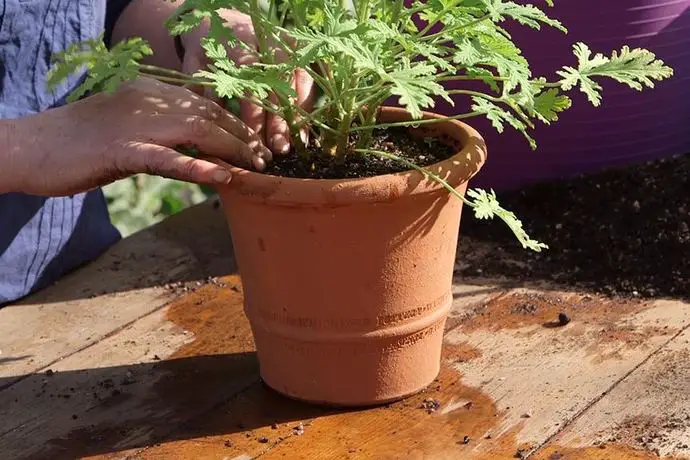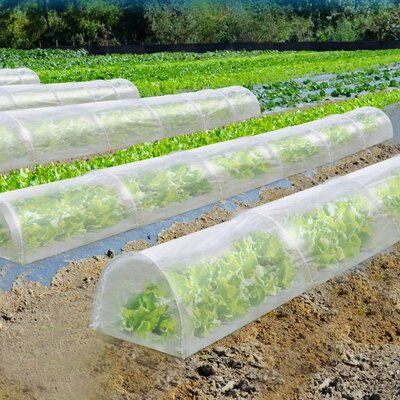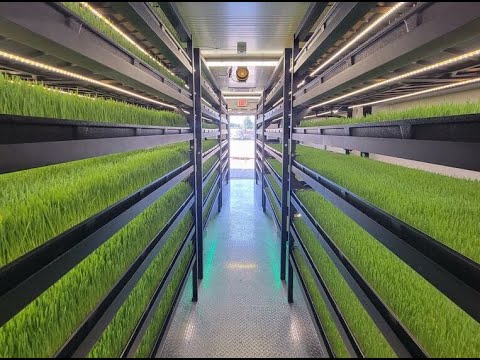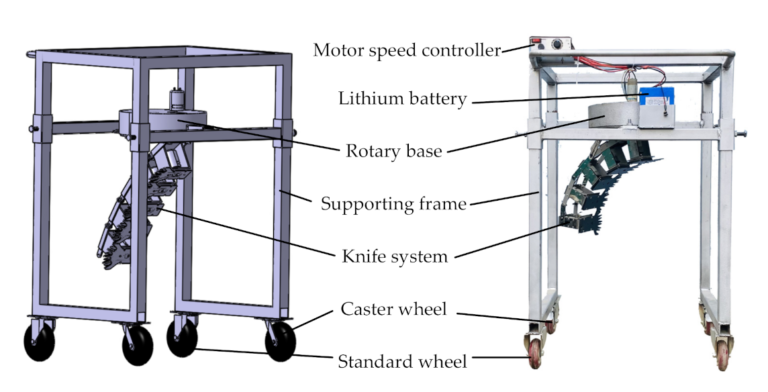Harvest Waste Disposal: How to Safely and Responsibly Get Rid of Your Plant Material
Table of Contents
Understanding the Importance of Proper Harvest Waste Disposal
Proper harvest waste disposal is an essential aspect of sustainable gardening practices. When left unattended, these organic materials can contribute to environmental pollution and the spread of diseases. It is crucial to understand the importance of responsible waste management to maintain a healthy garden ecosystem and promote overall environmental well-being.
Improper disposal of harvest waste can have significant consequences. Decomposing plant materials release greenhouse gases like methane, which contribute to climate change. Additionally, decaying waste can attract pests and diseases, posing potential risks to plants and the environment. By implementing proper disposal methods, we can mitigate these hazards and ensure the sustainability of our gardens while minimizing negative impacts on the surrounding community.
Identifying Different Types of Plant Material and Their Disposal Requirements
Plant material comes in various forms, each with its own unique disposal requirements. Understanding these differences is crucial for effective waste management in the harvesting process. One common type of plant material is trimmings, which includes leaves and small branches removed during pruning or harvesting. These trimmings can often be composted or used in mulching to enrich the soil and promote healthy plant growth. Another type of plant material is fruits and vegetables that have reached the end of their shelf life. While some may still be edible and suitable for donation to community organizations, others may need to be disposed of properly to avoid attracting pests or causing contamination.
In addition to trimmings and expired produce, plant material may also include diseased or infested parts. It is essential to identify these materials and handle them appropriately to prevent the spread of diseases or pests to other plants. Some options for disposing of diseased or infested plant material include burning, deep burial, or reaching out to local authorities for guidance on safe disposal methods. By understanding the specific disposal requirements for different types of plant material, gardeners can ensure they are adhering to best practices for waste management and contributing to a healthier and more sustainable gardening environment.

Assessing the Quantity of Harvest Waste and Planning for Disposal
When it comes to managing the waste produced during harvest, it is crucial to assess the quantity of waste generated and plan for its proper disposal. This allows for efficient and effective waste management, ensuring minimal impact on the environment and overall sustainability of the operation.
Assessing the quantity of harvest waste involves taking stock of the various types of plant material generated and determining the volume and weight of each type. This can be done through careful examination and measurement, preferably conducted at regular intervals throughout the harvesting season. By accurately quantifying the waste, gardeners and growers can make informed decisions about the most suitable disposal methods and plan for appropriate resources and infrastructure.
Planning for the disposal of harvest waste is an essential step towards a well-organized and environmentally responsible operation. It involves considering available options and selecting the most appropriate disposal methods based on factors such as the type and quantity of waste, local regulations, and the desired sustainability goals. In this process, it is crucial to explore sustainable options such as composting, mulching, or recycling, which can help minimize the waste’s impact on the environment and even provide potential benefits, such as nutrient-rich compost for future crops. Additionally, identifying partnerships with local recycling programs or community organizations that accept and repurpose plant material can contribute to a circular economy and support the larger environmental goals of the community.
By carrying out a thorough assessment of the quantity of harvest waste and planning for its proper disposal, gardeners and growers can actively contribute to a more sustainable and eco-friendly approach in their operations. Effective waste management practices not only reduce environmental impact but also create opportunities for resource conservation and innovation. The next section of this article will delve into exploring sustainable options for harvest waste management, providing further insight into the various methods available to minimize waste and promote a circular economy.

Exploring Sustainable Options for Harvest Waste Management
When it comes to managing harvest waste, exploring sustainable options is crucial for minimizing environmental impact and maximizing resource efficiency. One sustainable option that has gained popularity in recent years is composting. Composting allows for the natural decomposition of plant material, turning it into nutrient-rich compost that can be used to enrich soil and promote healthy plant growth. By diverting harvest waste from landfills and utilizing it for composting instead, gardeners can reduce greenhouse gas emissions and contribute to a more circular and sustainable economy.
Another sustainable option for harvest waste management is the use of mulching techniques. Mulching involves spreading a layer of organic material, such as straw or wood chips, over the soil surface. This not only helps to prevent weed growth and retain moisture in the soil but also breaks down over time, adding organic matter and nutrients to the soil. By utilizing mulching techniques, gardeners can reduce the amount of harvest waste generated and improve soil health in a natural and environmentally-friendly way.
By exploring these sustainable options and incorporating them into their harvest waste management practices, gardeners can make significant strides towards reducing waste, improving soil health, and promoting a more sustainable and eco-friendly garden environment.
Composting: A Natural and Environmentally-Friendly Solution
Composting is a natural and environmentally-friendly solution for managing harvest waste. By composting plant material, we can effectively reduce the amount of waste that ends up in landfills, while also creating a valuable resource for our gardens. This process involves the decomposition of organic matter, such as leaves, stems, and roots, by microorganisms like bacteria and fungi. The end result is a nutrient-rich soil amendment known as compost.
Not only does composting offer a sustainable way to deal with harvest waste, but it also benefits the overall health of our gardens. Compost enhances soil structure, improves water retention, and promotes the growth of beneficial microorganisms. In fact, studies have shown that using compost can increase crop yields and reduce the need for chemical fertilizers. Additionally, by diverting plant material from landfills, we can help decrease greenhouse gas emissions and combat climate change. Composting truly represents a win-win solution for gardeners and the environment.
Utilizing Mulching Techniques to Reduce Waste and Enhance Soil Health
Mulching techniques can play a crucial role in reducing waste and improving soil health in your garden. By covering the soil with a layer of organic material such as leaves, grass clippings, or wood chips, you not only prevent weed growth but also create a valuable environment for beneficial organisms and microorganisms. As these materials break down slowly, they release essential nutrients into the soil, providing a natural fertilizer for your plants.
Furthermore, mulching acts as a protective barrier, regulating soil temperature and moisture levels. This helps to prevent rapid evaporation of water from the soil, reducing the need for frequent irrigation and conserving water resources. Additionally, a well-mulched garden retains moisture, inhibits erosion, and promotes healthy root development, leading to stronger and more resilient plants.
Implementing mulching techniques is a simple and cost-effective way to manage garden waste while simultaneously enhancing soil health. The choice of mulch materials depends on factors such as the type of plants, local availability, and personal preferences. Remember to avoid using mulch that may contain weed seeds, as this can lead to unintended weed growth. Regularly replenish the mulch layer to maintain its effectiveness and reap the full benefits of this sustainable gardening practice.
Investigating Local Recycling Programs for Plant Material
Local recycling programs can play a crucial role in responsible plant material disposal. By investigating and utilizing these programs, gardening enthusiasts can contribute to sustainable waste management practices while also benefiting their communities. Local recycling programs often accept a variety of plant materials, including leaves, grass clippings, small branches, and plant trimmings. These materials are then transformed into valuable resources such as compost, mulch, or organic fertilizers.
One important aspect to consider when exploring local recycling programs is the specific requirements and guidelines they have for plant material disposal. Some programs may only accept certain types of plant material or may have limitations on the quantity that can be dropped off. It is advisable to contact the program or visit their website to gather relevant information before participating. Additionally, recycling programs may offer educational resources and workshops on composting techniques and the benefits of using recycled plant materials, providing gardening enthusiasts with valuable knowledge to apply in their own gardens. By taking advantage of local recycling programs, gardeners can play an active role in minimizing waste and promoting a sustainable approach to plant material disposal.
Donating Unused or Excess Harvest Waste to Community Organizations
When it comes to proper harvest waste disposal, donating unused or excess plant material to community organizations is a fantastic option. Not only does this help reduce waste, but it also provides an opportunity to give back to the local community. Many community organizations, such as food banks, community gardens, and animal shelters, welcome donations of fresh produce, trimmings, and other plant materials.
By donating your unused harvest waste, you can make a positive impact on those in need. Fresh produce and plant materials can be a valuable source of nutrition for individuals and families who may not have access to fresh, healthy food. Additionally, many community gardens rely on donated plant material to enhance their growing spaces and provide educational opportunities for community members.
Before donating, it’s important to check with the community organization to ensure they are able to accept the specific types of plant materials you have available. Some organizations may have limitations on what they can accept or may have specific guidelines for donations. By following these guidelines, you can ensure that your donation is put to good use and has the maximum benefit for the community.

Safe Handling and Transportation Practices for Harvest Waste Disposal
When it comes to the safe handling and transportation practices for harvest waste disposal, it is essential to prioritize the health and safety of both individuals involved and the environment. Proper handling techniques ensure that no harm is caused during the collection and transport of plant material. One key aspect to consider is the use of personal protective equipment (PPE) such as gloves and masks to protect against allergens and potential harmful substances.
In addition to PPE, it is crucial to use appropriate containers or bags for packaging the harvest waste. These containers should be sturdy and leak-proof to prevent any spillage or contamination. Proper sealing and labeling of the containers are also important to ensure that the waste is correctly identified during transportation. It is advisable to use containers that are specifically designed for organic waste disposal, as they are capable of withstanding the decomposition process without causing any harm to the environment. By following these safe handling and transportation practices, we can ensure a responsible and environmentally-friendly approach to harvest waste disposal.
Government Regulations and Guidelines for Proper Plant Material Disposal
Government regulations and guidelines play a crucial role in ensuring the proper disposal of plant material after harvest. These regulations are put in place to protect the environment, prevent the spread of diseases or pests, and maintain the overall health of agricultural ecosystems.
| Regulation Aspect | Description |
|---|---|
| Designated Disposal Areas | Dispose of plant material in designated areas or facilities to minimize contamination and prevent unwanted plant material from invading natural habitats. |
| Local Government Guidelines | Local governments provide specific guidelines on how to dispose of various plant materials (leaves, stems, roots, fruits). Gardeners must familiarize themselves with these guidelines for responsible waste management. |
| Disposal of Diseased or Infested Material | Government regulations address the proper disposal of diseased or infested plant material to prevent the spread of pests or diseases. Gardeners should follow recommended protocols, which may include burning, deep burial, or specialized methods. |
| Preventing Pathogen or Pest Spread | Proper disposal measures help prevent the spread of pathogens or pests, safeguarding the health of crops and the overall integrity of agricultural systems. |
| Legal Requirement and Environmental Preservation | Complying with regulations is a legal requirement and a crucial step in preserving the environment. Gardeners contribute to sustainable waste management, protecting ecosystems and agricultural health. |
Additional Details:
- Gardeners and farmers should contact local agricultural authorities for specific guidelines on plant material disposal.
- Burning, deep burial, or other specialized methods for diseased or infested material disposal may vary based on the nature of the pest or disease.
- Proper waste management not only prevents contamination but also supports the long-term health and productivity of agricultural systems.
- Education and awareness campaigns can further encourage adherence to regulations, promoting responsible waste disposal practices.
Best Practices for Disposing of Diseased or Infested Plant Material
When it comes to proper disposal of diseased or infested plant material, following best practices is essential to prevent the spread of pests and diseases to other plants. One of the most effective methods is to completely remove and destroy the affected plant material. This can be done by carefully uprooting the plant, cutting it into smaller pieces, and then bagging and sealing it before disposing of it in a landfill. It’s important to note that burning or burying diseased plants is not recommended, as it can potentially spread the pathogens to other areas.
In addition to physical removal, it’s crucial to clean and sanitize any tools or equipment that have come into contact with the infected plants. This includes garden tools, pots, trays, and even gloves. Using a mixture of bleach and water or other sanitizing solutions can help kill any pathogens that may be present. Proper sanitation practices should always be followed to prevent the spread of diseases from one plant to another, ensuring a healthy growing environment.
| Practice | Description |
|---|---|
| Completely Remove and Destroy Affected Material | Remove and destroy affected plant material entirely to prevent the spread of diseases or pests. |
| Carefully Uproot and Cut into Smaller Pieces | Carefully uproot the plant, cut it into smaller pieces for easy disposal, minimizing the risk of further contamination. |
| Bag and Seal Before Landfill Disposal | Bag and seal the plant material before disposing of it in a landfill to contain potential pathogens or pests. |
| Avoid Burning or Burying Diseased Plants | Avoid burning or burying diseased plants to prevent the spread of pathogens. |
| Clean and Sanitize Tools, Equipment, and Gloves | Clean and sanitize tools, equipment, pots, trays, and gloves that have come into contact with infected plants. |
| Use Sanitizing Solutions (e.g., Bleach and Water) | Use sanitizing solutions like a mixture of bleach and water to effectively disinfect equipment and surfaces. |
| Follow Proper Sanitation Practices | Follow proper sanitation practices consistently to prevent the spread of diseases and maintain a healthy environment. |
Considering Commercial Options for Large-Scale Harvest Waste Disposal
Large-scale harvest waste disposal can be a significant challenge for agricultural enterprises, requiring careful consideration to ensure efficient and environmentally responsible solutions. When considering commercial options for handling large volumes of plant material, it is crucial to partner with reputable waste management companies that specialize in agricultural waste. These companies possess the expertise and equipment necessary to handle waste on a large scale while adhering to local regulations and best practices.
One option for large-scale harvest waste disposal is utilizing biomass conversion facilities. These facilities can process organic plant material into valuable products such as biofuels, fertilizers, or animal feed. By converting waste into useful resources, biomass conversion facilities contribute to sustainable waste management and promote the circular economy. This approach not only reduces the environmental impact of waste disposal but also presents economic opportunities for waste producers and the local community.

Another commercial option for disposing of large-scale harvest waste is working with composting facilities. Composting is a natural and environmentally friendly method that converts plant material into nutrient-rich compost. Compost can then be used as a soil conditioner or fertilizer, promoting healthy plant growth and reducing the need for synthetic chemicals. Partnering with composting facilities allows for the efficient management of large volumes of plant waste while contributing to soil health and sustainability. Additionally, some composting facilities offer waste collection services, making it more convenient for agricultural enterprises to dispose of their harvest waste responsibly.
In conclusion, when confronted with the challenge of large-scale harvest waste disposal, agricultural enterprises should explore commercial options in waste management. Partnering with biomass conversion facilities and composting facilities offers environmentally responsible solutions that can benefit both the agricultural sector and the wider community. By choosing these commercial options, farmers and growers contribute to a more sustainable and resource-efficient agricultural industry.
Promoting a Circular Economy: Innovative Ways to Repurpose Harvest Waste
In today’s world, promoting a circular economy is crucial for achieving sustainable development goals and reducing waste. When it comes to harvest waste, innovative ways to repurpose it can have a significant impact on creating a more efficient and environmentally friendly system.
One innovative way to repurpose harvest waste is through the creation of bioenergy. Many organic materials, such as crop residues and plant waste, can be converted into biofuel through processes like anaerobic digestion or pyrolysis. This not only helps in reducing greenhouse gas emissions but also provides a renewable energy source that can be utilized in various sectors.
Moreover, another promising method for repurposing harvest waste is through the creation of biodegradable packaging materials. With the increasing demand for sustainable packaging, utilizing crop residues and plant fibers to make bioplastics can significantly reduce the reliance on conventional petroleum-based plastics. These biodegradable materials have the potential to reduce environmental pollution and create a closed-loop system by returning to the earth after their useful life.
By exploring and implementing these innovative ways to repurpose harvest waste, we can move towards a more sustainable and circular economy. These practices not only contribute to waste reduction but also have the potential to create new business opportunities and promote a greener future for generations to come.
What is the circular economy?
The circular economy is an economic system aimed at minimizing waste and maximizing the reuse, recycling, and repurposing of resources.
Why is proper harvest waste disposal important?
Proper harvest waste disposal is important to prevent environmental pollution, conserve resources, and promote sustainable practices in agriculture.
What are some common types of plant material and their disposal requirements?
Common types of plant material include leaves, stems, roots, and fruits. Disposal requirements may vary depending on the plant material and its condition.
How can I assess the quantity of harvest waste and plan for its disposal?
To assess the quantity of harvest waste, you can keep track of the amount generated during harvest activities. Planning for disposal involves considering sustainable options, such as composting or recycling.
What are some sustainable options for harvest waste management?
Sustainable options for harvest waste management include composting, mulching, recycling, and donating to community organizations.
How can composting be a natural and environmentally-friendly solution for harvest waste?
Composting involves decomposing organic waste, such as plant material, into nutrient-rich compost that can be used to enrich the soil and promote healthy plant growth without the use of chemical fertilizers.
How does utilizing mulching techniques help reduce waste and enhance soil health?
Mulching involves covering the soil with a layer of organic material, such as shredded plant waste, which helps retain moisture, suppress weed growth, and improve soil fertility.
Are there any local recycling programs available for plant material?
It is worth investigating local recycling programs that accept plant material as some communities offer recycling options specifically for this type of waste.
Can unused or excess harvest waste be donated to community organizations?
Yes, donating unused or excess harvest waste to community organizations, such as food banks, animal shelters, or community gardens, can be a beneficial way to repurpose the waste and support local initiatives.
What are some safe handling and transportation practices for harvest waste disposal?
Safe handling and transportation practices include wearing protective gear, using proper tools for cutting and collecting waste, and securing the waste properly during transportation to prevent spills or accidents.
Are there any government regulations or guidelines for proper plant material disposal?
Yes, there may be government regulations or guidelines that govern the disposal of plant material, especially if it is considered hazardous or invasive. It is important to consult local authorities or agricultural agencies for specific regulations in your area.
How should diseased or infested plant material be disposed of?
Diseased or infested plant material should be disposed of carefully to prevent the spread of diseases or pests. It is recommended to burn or bury such material, following guidelines from local agricultural agencies.
What are some commercial options for large-scale harvest waste disposal?
Commercial options for large-scale harvest waste disposal may include contracting with waste management companies or biomass facilities that specialize in processing and repurposing organic waste.
Can you provide examples of innovative ways to repurpose harvest waste in a circular economy?
Innovative ways to repurpose harvest waste in a circular economy may include using plant material for bioenergy production, creating natural dyes or pigments, developing biodegradable packaging materials, or utilizing plant fibers for textile production.

Beck Wakeford is a dedicated writer at SouthElMonteHydroponics, with a fervent enthusiasm for agriculture and technological innovation. Armed with a degree in Agricultural Engineering from a leading university, Beck specializes in hydroponic systems design, automation, and optimization. Their passion for merging traditional farming with cutting-edge technology drives them to explore novel solutions for sustainable food production. Beck’s expertise and keen interest in the intersection of engineering and agriculture make them a valuable asset in the quest for efficient and eco-friendly farming practices. Through their writing, Beck aims to inspire others to embrace the potential of hydroponics in shaping a more sustainable future.






